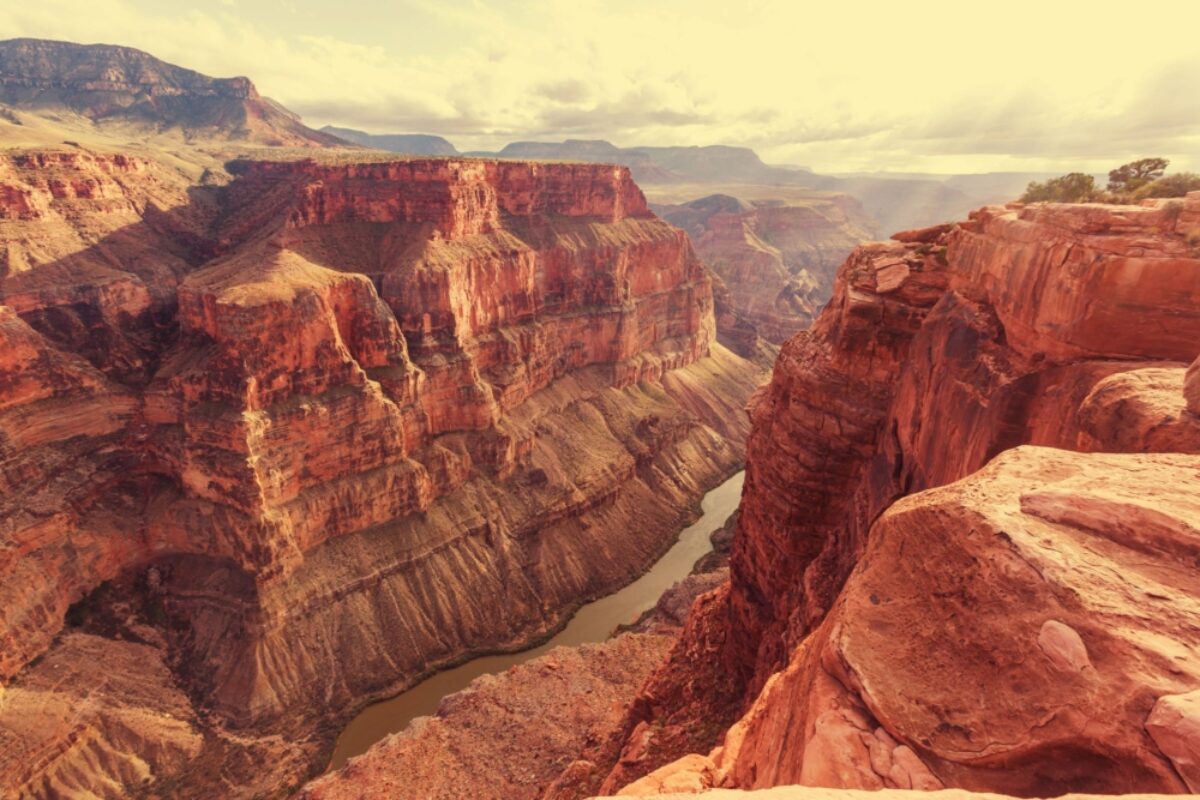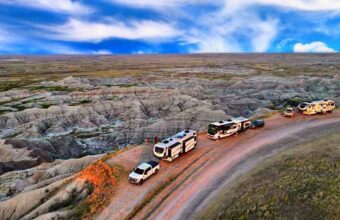Grand Canyon Driving Loop
This lasso loop swings past some of the largest and most breathtaking natural formations in the Southwest, ending with a showstopping bang at the South Rim of the Grand Canyon.
Hoodoos, arches, red rock cliffs and a horseshoe bend are just a few of the photographic highlights along the way.
Grand Canyon driving loop
Approx. distance: 1,400 miles
Duration: Two weeks
Suggested route: Phoenix, Sedona, Flagstaff, Hoover Dam, Las Vegas, Valley of Fire State Park, Zion National Park, Bryce Canyon National Park, Grand Canyon National Park – North Rim, Horseshoe Bend, Grand Canyon – South Rim, Phoenix.

The world-famous Grand Canyon
The route
From Phoenix it's a two-hour drive north to Sedona via I-17 and Hwy 179. The latter is also known as the Red Rock Scenic Byway. Lined with enormous orange-and-red sandstone formations, including Bell Rock and Courthouse Butte, the byway lives up to its name. Spend two days hiking and communing with the red rocks then drive thirty miles north to Flagstaff on the scenic Oak Creek Canyon Highway, which runs through a gorge bordered by towering pine trees and soaring canyon walls. With a compact and lively downtown, loads of good restaurants and hotels, and a fun brewery trail, Flagstaff is an appealing place to overnight.
It’s a 3¼-hour drive to the Hoover Dam and Lake Mead, worth a half-day of exploration. Continue another 45 minutes to Las Vegas and its over-the-top sights. It’s a memorable place to spend the night. Spend two days in Sin City then drive one hour northeast for a half-day visit to Valley of Fire State Park and its fiery red rock display. From here it’s a 2½-hour drive to the southern entrance of Zion National Park and its lush canyon, sandwiched between red rock cliffs. Spend two days here then drive two hours north to Bryce Canyon National Park for your next overnight stay.
From Bryce, it’s a three-hour drive to the Grand Canyon’s North Rim and its high-altitude views. Spend two days here then drive 120 miles northeast through remote northeastern Arizona, passing the breathtaking orange-and-purple Vermilion Cliffs. Cross the Navajo Bridge over the Colorado River on your way to Page, a good base for exploring northeast Arizona’s red rock wonders. Detour to Antelope Canyon with your best camera for can’t-fail photos of beams of sunlight illuminating an intimate slot canyon. Tours are a cattle call, but they’re worth it. From Page, drive 2½ hours to Grand Canyon Village along the East Rim Drive, stopping at a few of the pullouts to savour the immense views of the red and purple canyon walls. Spend three days at the South Rim then drive four hours south to Phoenix.
What to see
Hoover Dam & Lake Mead
Completed in 1936, the 726ft-high Hoover Dam across the Colorado River remains an architectural wonder. Guided tours drop deep into the facility and share details about its incredibly challenging construction. From an outdoor viewing area atop the dam, look back at lake mead. The discoloured “bathtub” rings on the surrounding red rock reveal how much the water level has dropped over the years. For a birds-eye view of the dam itself, which straddles the Arizona-Nevada state line, walk across the graceful Mike O’Callahan-Pat Tillman Memorial Bridge – but only if you’re not afraid of heights.
Valley of Fire State Park
An easy detour from the I-15 between Las Vegas and Zion National Park, Valley of Fire State Park lives up to its name. Here, a fiery gauntlet of fantastical sandstone formations hug Hwy 169, illuminating brilliantly at sunrise and sunset. An 11-mile round-trip scenic road passes even more formations. Northeast of Lake Mead, this desert park get broiling hot in summer, so save this one for spring or fall. There are two park campgrounds.
Zion National Park
The hike from the Virgin River up to Angels Landing, a rocky outcrop with a commanding view of Zion Canyon, is an exhilarating adventure. After finishing a series of 21 steep switchbacks known as Walter’s Wiggles, the trail unfurls across a narrow ridge bordered by sheer drop-offs. A final scramble up a rocky slope ends at a 5790ft high viewpoint. The park’s second iconic hike is The Narrows, a 16-mile hike along the North Fork of the Virgin River through an impossibly skinny slot canyon.
Bryce Canyon National Park
Bryce Canyon is rightly famous for its vast “forest” of colourful sandstone spires and hoodoos, which shimmer like beasts from a fantasy novel as the sun goes down. The geologic highlights of this park are easy to see from viewpoints along the Scenic Road but you can get a closer look at the formations on foot and by horseback. At night, stargazing at this remote park is excellent.
Grand Canyon National Park – North Rim
Located in remote and sparsely populated northern Arizona, the hard-to-reach North Rim sees lighter crowds than its southern counterpart. And due to heavy snowfall, the lodge and all roads in the park are open only from mid-May through November. All of these factors give the high-altitude North Rim a well-earned reputation as a special place. With its big-windows and stone walls, North Rim Lodge is simultaneously cozy and grand. Trails twist their way past Ponderosa pines, opening up suddenly to expansive canyon views. Mule trips (mid-May-mid Oct) along the rim and into the upper canyon keep things fun for families.
Horseshoe Bend
From the overlook, the view of the Colorado River twisting in a perfect U-shape through a sandstone escarpment – 1,000 feet below – is both terrifying and mesmerising. Located between mile markers 545 and 544 on Hwy 89 south of Page, the Horseshoe Bend overlook is reached by a mostly shadeless 1.5 -mile round-trip hike, which can be surprisingly strenuous. The viewpoint and trail are part of the Navajo Nation while Horseshoe Bend itself sits within the Glen Canyon Recreation Area.
Grand Canyon – South Rim
The South Rim showcases the Grand Canyon in all its immense glory. A dozen viewpoints overlook billion-year-old rocks, the Colorado River, and lush green spaces, which mark the trailside oases where generations of visitors have paused to refill their canteens and camp under cottonwood trees. Big views mean big crowds, however, and the South Rim stays busy year-round, with the thickest crowds in summer. Even a short walk into the canyon will help you find a bit of solitude – just remember that the hike back to the rim is uphill and will take you twice as long as the time hiking down. Several lodges and restaurants border the canyon in the busy Grand Canyon Village, which is also home to museums, an art gallery and studio, a Native American arts and crafts shop, a market and stables.
Ditch the car
There are miles of greenways and low-traffic roads to explore by bicycle on the South Rim. Bright Angel Bicycles (www.bikegrandcanyon.com) rents bikes beside the Grand Canyon Visitor Center near the South Entrance Station.






